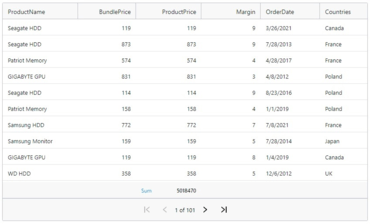Fournisseur officiel
Comme nous somme les distributeurs officiels et autorisés, nous vous fournissons des licences légitimes directement à partir de 200+ éditeurs de logiciels.
Voyez toutes nos marques.
Blazor Dock Manager (Preview)
Blazor Grid
Blazor Data Visualization
Blazor Chip
Blazor Drop Down
Blazor Mask Input
Blazor Progress Bar - Linear and Circular
Blazor Rating
Blazor Slider and Range Slider
Blazor Snackbar
Blazor Toast

Créez des applications Blazor plus rapidement avec le langage C#.
Discutez en direct avec l'un de nos spécialiste des licences Infragistics .